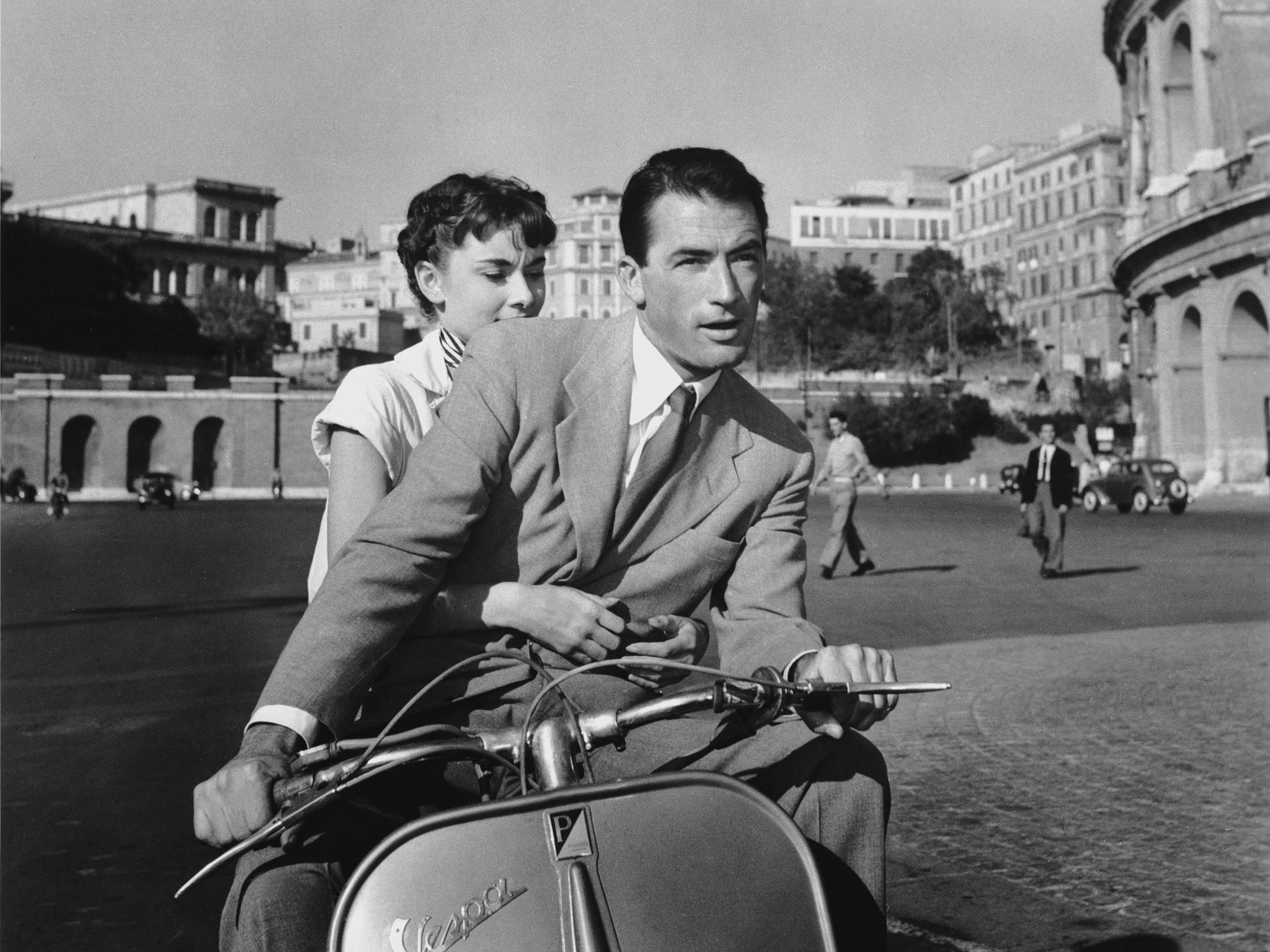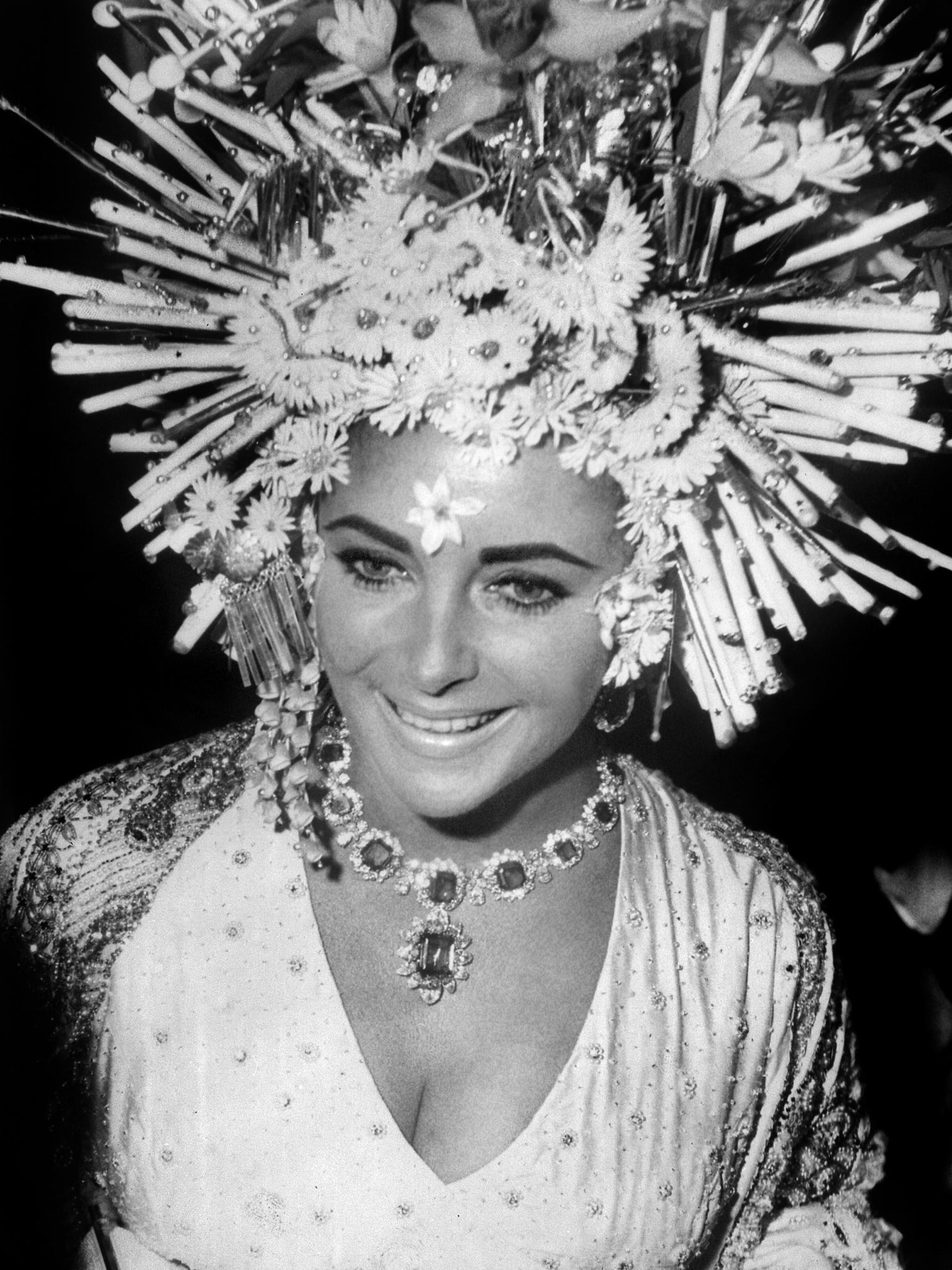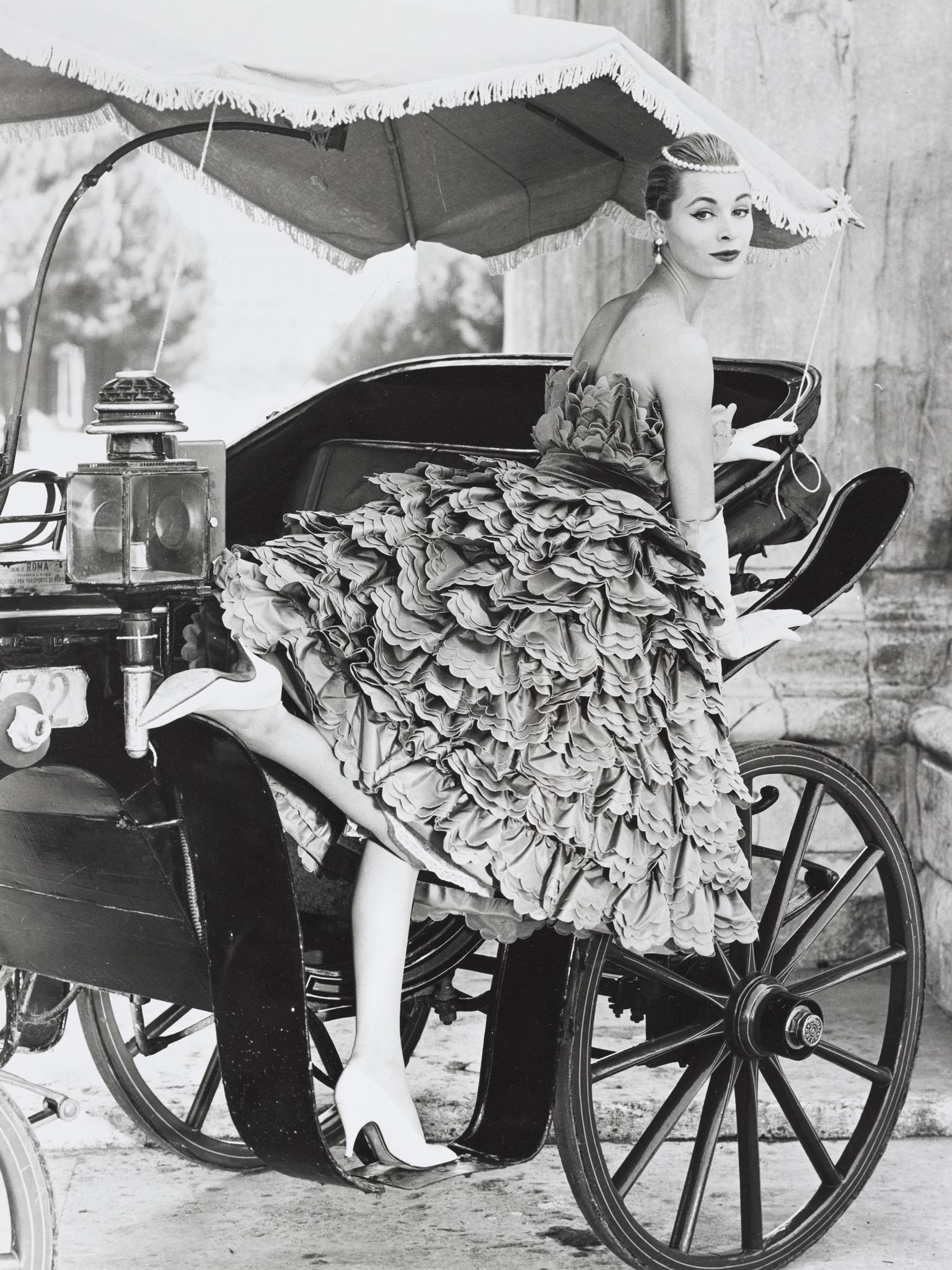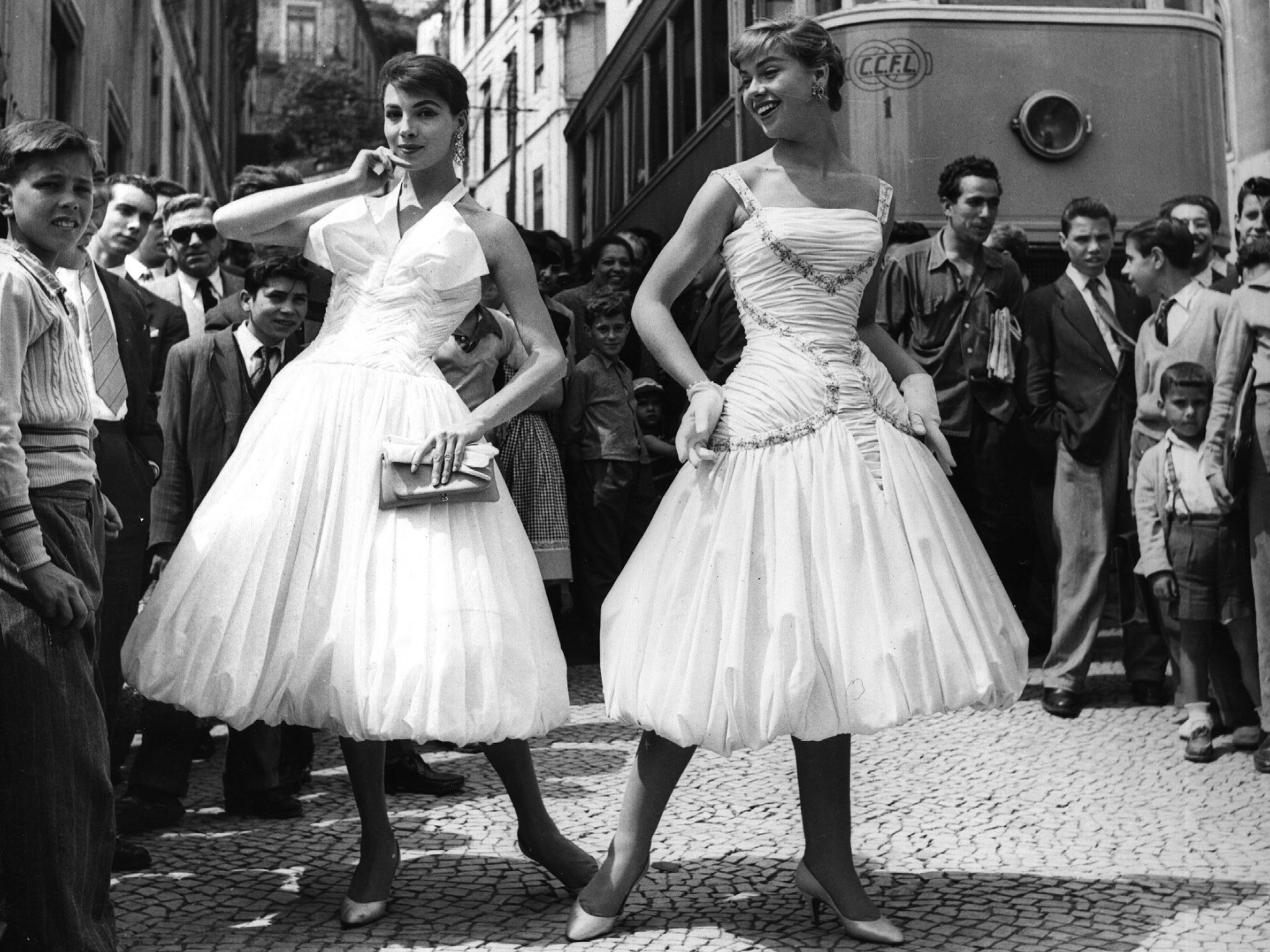How the V&A's Glamour of Italian Fashion exhibition fell flat
The V&A’s survey of Italian fashion from the mid Forties to the present day features some stunning costumes but is still not dramatic enough to do justice to its glamorous subject

Your support helps us to tell the story
From reproductive rights to climate change to Big Tech, The Independent is on the ground when the story is developing. Whether it's investigating the financials of Elon Musk's pro-Trump PAC or producing our latest documentary, 'The A Word', which shines a light on the American women fighting for reproductive rights, we know how important it is to parse out the facts from the messaging.
At such a critical moment in US history, we need reporters on the ground. Your donation allows us to keep sending journalists to speak to both sides of the story.
The Independent is trusted by Americans across the entire political spectrum. And unlike many other quality news outlets, we choose not to lock Americans out of our reporting and analysis with paywalls. We believe quality journalism should be available to everyone, paid for by those who can afford it.
Your support makes all the difference.“The only word Elizabeth knows in Italian is ‘Bulgari,’” Richard Burton once said. He had bought Taylor an emerald and diamond necklace from the Italian luxury jewellers after they fell in love on the set of Cleopatra (1963). The film was shot in Rome’s Cinecittà (“cinema city”) studios, founded by Mussolini in 1937 for propaganda purposes under the slogan “cinema is the most powerful weapon”. And indeed it was powerful – the studios became synonymous with extreme glamour in the post-war years, with lavish sets and costumes by the very best designers. Cleopatra was a decadent disaster. Both Taylor and Burton were married to other people at the time, and their affair caused a paparazzi frenzy. The Vatican condemned Taylor for the peculiar crime of “erotic vagrancy”.
The necklace, along with a brooch that had previously been given to Taylor by her fourth husband, Eddie Fisher, are included in a new exhibition at the Victoria and Albert Museum, the Glamour of Italian Fashion: 1945-2014. Locked in a glass case, a 23.44 carat emerald pendant hangs from a circle of smaller emeralds, sourced not from Italy, but Colombia. The colour is a pure, startling green. The diamonds around the emeralds glitter aggressively. They sparkle in a way that is almost blinding, akin to the paparazzi flash-bulbs that followed Taylor and Burton everywhere. In fact, the word “paparazzo” comes from the film La Dolce Vita (1960), also shot at Cinecittà – which suggests how much the era has shaped our modern idea of celebrity.
This exhibition explores how Italian fashion emerged out of a country devastated by war to become a globalised industry. “Made in Italy” is a mark of quality, rooted in centuries of regional artisan production. Curator Sonnet Stanfill has been working on the exhibition full time for two years and her research and acumen is evident. However, the narrative is not dramatic enough. It does not do justice to its subject. Italian glamour is glorious for its spectacle, its excess – to our insipid English palates, its proud OTT-ness. The tone here is more subdued. This is also a story about the conflict between artisan production and mass industry, which is explored, but not in depth.

Next to the emeralds, there is a black and white photograph of Taylor and Burton arriving at a masque ball at the Hotel Ca’Rezzonico, Venice, in 1967. She wears the emeralds, and an elaborate headdress that appears to be made out of cigarettes (although this is probably not the case). Burton wears a shining Venetian cape. The image is high camp, but also seductive: conspicuous consumption plus mad love. Taylor was a perfect ambassador for Bulgari. And it should be noted that Bulgari is the sponsor of this exhibition.
“Hollywood on the Tiber” was a phenomenon that emerged in the Fiftes and Sixties as international stars became associated with the glamour of Italy. The word “glamour” comes from the 18th century – it means “enchantment, magic”. It was an aura that surrounded the productions of Italian designers at that time – from the Fontana sisters to Mila Schön to Princess Irene Galitzine. What is remarkable about the period is the number of female designers who started their own fashion houses. It seemed that fashion was an industry where women could come into their own and achieve independence.
I would have liked to know more about the relationship between place and glamour. For example, the island of Capri became synonymous with aspirational tourism in the Fifties after Emilio Pucci opened a boutique there and invented capri pants. There are some Pucci creations on display: a mannequin, wearing a tunic and leggings with his distinctive, vaguely Aztec, geometric pattern, readies herself to clamber on to an original 1949 Vespa, which featured in numerous films, such as Roman Holiday (1953), also shot at Cinecittà.

Stanfill’s scholarship is most evident at the beginning of the exhibition. A large black and white photograph of figures walking through the rubble of bombed-out Florence is accompanied by a ladies’ suit that refers to the fascist past. It consists of a broad-shouldered blue jacket with horizontal white stripes and a pleated skirt. The waist is only slightly cinched, a sharp contrast to the cocktail dresses that would come merely a decade later, with waists so waspish that their wearers must have avoided all solid food. The suit is unremarkable, except for the label inside: “marca di garanzia”.
This was the official stamp of approval from the National Fashion Board, through which the fascist government regulated production and Italianized all French names. The Paris-inspired Italian fashion house that made the suit, La Merveilleuse, was renamed Tortonese. As Stanfill points out, this was an attempt by Mussolini to unite the nation, but it masked “the country’s history as a series of independent states with diverse regional traditions”. After the war, the economy was in chaos, illiteracy was near 50 per cent. Out of this privation, the Italian fashion industry emerged.
Giovanni Battista Giorgini, a Florentine businessman, is credited with starting things off. He held a series of influential catwalk shows in Florence in the early Fifties, and invited buyers from US department stores such as Bergdorf Goodman. Until that point, Parisian fashions had dominated.
Some of the creations included in Giorgini’s Sala Bianca are displayed here: a stunning cocktail dress by Vita Noberasco, which consists of a nude petticoat covered with black lace. It manages to evoke both peacocks and phoenixes without seeming too much. A faun-coloured evening gown by Simonetta Colonna di Cesarò with a skirt made of layered chiffon and silk to create a feathery effect – it verges on Swan Lake but somehow appears elegant. Simonetta was imprisoned during the war for her anti-fascist activities. She was one half of a fashion power couple. Her husband Roberto Capucci’s cocktail dress with velvet stole in rich, romantic, dusty purple is one of the stand-out pieces of the exhibition.
It is surreal to wander around these headless white mannequins with slender limbs arranged in gestures of surprise, as though frozen, mid-anecdote, during an impossibly glamorous Florentine cocktail party circa 1963. These dresses transformed those who wore them into mythic, more-than-human chimeras, which is perhaps the point of glamour. There are two in particular that I love, both designed by Schön for guests of Truman Capote’s 1966 Black and White Ball at the Plaza Hotel, New York, following the success of In Cold Blood.

The first is a silver floor-length dress with rivers of sequins flowing downwards, which overall gives the impression of a dazzling, delicate fish. It was worn by Lee Radziwill, sister of the First Lady Jacqueline Kennedy. The second is perhaps my favourite dress in the exhibition: made of a crêpe petticoat under a shimmering silver-gold net, embroidered with circles of beads. It was worn by Marella Agnelli, wife of the chairman of Fiat.
The photograph of Agnelli and her husband at the ball is telling: he is a non-descript middle-aged man in black suit and bow-tie but she is a plumed creature from another world. Feathers sprout out of her head. She wears a mask over her eyes, which gives her anonymity and therefore power. She appears more than herself, whereas he is just… himself. Capote called these well-bred women his “swans”.
One of the most interesting things about this exhibition is how women from the upper echelons constructed their own fantasy worlds. They may have generally wielded less professional might than their husbands, but they could transform themselves into starry spectacles and thereby command attention. Or perhaps, to borrow the novelist Angela Carter’s phrase, they were “simply flattering themselves into submission”.
Burton and Taylor’s marriage combusted for the second and final time in 1976. It seems poignant that Cinecittà has now closed, but will reopen later this year as an Italian-style Universal Studios – a theme park.
The Glamour of Italian Fashion:1945-2014, Victoria and Albert Museum, London SW7 (vam.ac.uk) to 27 July
Join our commenting forum
Join thought-provoking conversations, follow other Independent readers and see their replies
Comments